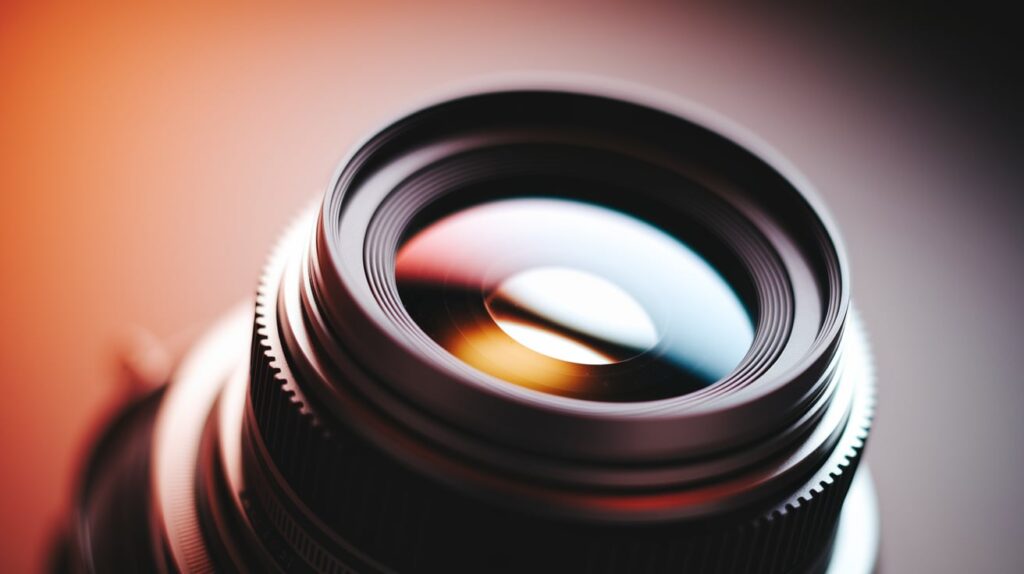Imagine holding a camera in your hands, ready to capture the world. But have you ever wondered about the small yet powerful lens that helps you preserve those memories?
You might not realize it, but camera lenses are intricate pieces of art and technology. They’re crafted with precision, using techniques that combine science and creativity. Understanding how these lenses are made can change the way you see photography. It can deepen your appreciation for the images you capture.
So, let’s dive into the fascinating process of creating camera lenses. You’ll discover the secrets behind the clarity and beauty of your photos, and find out why choosing the right lens is crucial. Get ready to see your camera in a whole new light.
Materials Used In Lens Manufacturing
When you hold a camera lens up to the light, it might seem like a simple piece of glass. But there’s a fascinating complexity behind how camera lenses are made, especially in the materials used. Understanding these materials can give you insights into why lenses perform the way they do and why they vary in cost. Dive into the intriguing world of lens manufacturing and discover the essential components that make up your camera’s eye.
Glass Types
The heart of any camera lens is its glass. You might be surprised to learn that there are different types of glass used in lens manufacturing. Manufacturers use crown and flint glass, each with unique properties. Crown glass offers clarity and minimizes distortion, while flint glass enhances dispersion, helping in correcting chromatic aberration.
Imagine taking a photo with vibrant colors and crisp details. That’s the magic of combining these glass types. Have you ever wondered why your photos look stunning under different lighting conditions? It’s because of the careful selection of glass types in your lens.
Coating Materials
Lens coatings are like sunglasses for your camera. They protect the glass and improve image quality. Anti-reflective coatings reduce glare and reflections, ensuring your photos remain sharp and clear. Think about those beautiful sunsets you capture without the annoying lens flare. That’s the coating working its magic.
Manufacturers also use coatings to enhance color balance and contrast. This means your photos are rich and true to life. Next time you shoot under harsh light, remember the coatings are your silent allies in getting the perfect shot.
Metal And Plastic Components
The durability of your lens comes from its metal and plastic components. Metal parts provide strength and stability. They ensure your lens can withstand the rigors of travel and outdoor adventures. Plastic components, on the other hand, offer lightweight convenience without compromising on quality.
Have you ever felt the solid build of a premium lens in your hand? That’s the combination of metal and plastic working together. You trust your lens to perform, whether you’re capturing a fast-moving action scene or a serene landscape. These materials ensure that trust is not misplaced.
Understanding the materials used in lens manufacturing enhances your appreciation for the craftsmanship involved. Next time you pick up your camera, consider what goes into making your lens work seamlessly, allowing you to capture the world in all its beauty. What do you think makes a lens truly exceptional?

Design And Engineering
The art of crafting camera lenses combines design and engineering. This process demands precision and advanced technology. Engineers and designers work together to create high-quality lenses. Each step involves meticulous planning and execution. Let’s explore the intricate details of this fascinating process.
Optical Design Principles
Optical design principles form the backbone of lens creation. Designers focus on light behavior. They study how light travels through glass. Their goal is to minimize distortion and maximize clarity. Complex calculations determine lens curvature and thickness. Every detail impacts image quality.
Lens Element Arrangement
Arranging lens elements involves careful consideration. Engineers decide how many elements a lens needs. They position each element to control light paths. This arrangement affects focus, zoom, and image sharpness. Precision in this step ensures optimal performance. Every element serves a specific purpose.
Precision Engineering Techniques
Precision engineering techniques ensure lens accuracy. High-tech machines grind and polish glass pieces. This process requires extreme accuracy. Even slight errors can affect performance. Engineers use computer models to simulate lens behavior. They test prototypes to perfect the design.
Advanced tools measure and verify each lens element. These techniques guarantee consistent quality. They transform raw materials into sophisticated optical devices.
Glass Molding Process
Understanding the glass molding process for camera lenses offers a glimpse into the intricate world of precision and craftsmanship. This process transforms raw glass into the sophisticated lenses that capture life’s moments with clarity and detail. It’s a journey that combines science, art, and technology, ensuring your camera lens delivers exceptional performance.
Raw Glass Preparation
The journey begins with preparing raw glass. This stage is crucial to ensuring the final lens quality. Glass materials are carefully selected for their purity and optical properties. They are then melted down in a furnace at extremely high temperatures. You might be surprised to learn that even a slight impurity can affect the final image.
Once melted, the glass is cooled slowly to prevent stress and cracks. Imagine cooling a hot cup of coffee to the perfect temperature—it requires patience and precision. The cooled glass is now ready for the next stage: molding.
Molding Techniques
Molding the glass into lens shapes is a fascinating process. Various techniques are employed to achieve the desired curvature and thickness. Using precision molds, the glass is pressed into shape under controlled conditions. Ever wondered why your lens is so smooth and flawless? The molds are meticulously polished to ensure this quality.
Advanced technology often comes into play here, with computer-controlled machines guaranteeing precision. Picture a sculptor carving a masterpiece, where every detail matters. This is how your lens begins to take its unique form.
Quality Control Measures
Quality control is the backbone of lens manufacturing. Rigorous checks are performed at every stage to ensure the lens meets high standards. Specialized tools measure the lens’s optical performance, checking for distortions and aberrations. Think of it as a chef tasting his dish before serving it to guests—every detail must be perfect.
Moreover, lenses undergo durability tests to ensure they withstand various conditions. Would you trust a lens that hasn’t been tested for reliability? These measures ensure that when you capture a photo, the lens performs seamlessly.
So, next time you use your camera, think about the incredible journey of your lens. How does knowing the intricate process behind camera lenses change your perspective on photography? Does it make you appreciate the delicate balance between art and science in capturing your world? Let these questions guide your curiosity as you explore photography with renewed appreciation.
Grinding And Polishing
The journey of crafting a camera lens is intricate. Grinding and polishing play crucial roles. These processes shape the lens and ensure its clarity. Precision is key. Let’s explore how these steps bring raw glass to life.
Surface Grinding Methods
Grinding begins with raw glass. Machines grind the surface into a precise shape. Different methods ensure accuracy. Diamond wheels are often used. They offer high precision. Each pass removes fine layers of glass. This shapes the lens to perfection.
Polishing Techniques
Grinding leaves a rough surface. Polishing smooths it out. Special pads and compounds polish the glass. The goal is a flawless finish. Polishing removes microscopic imperfections. This step is essential for clarity.
Achieving Optical Clarity
Clarity is crucial for a camera lens. Any flaw affects image quality. Grinding and polishing ensure optical excellence. Each lens undergoes strict inspection. Only perfect lenses pass. The result is clear, sharp images.
Coating And Assembly
The creation of camera lenses involves intricate processes. Among these, coating and assembly play crucial roles in ensuring lenses function optimally. Coating minimizes unwanted reflections, while assembly ensures precision in lens elements. Together, they contribute to the durability and performance of camera lenses.
Anti-reflective Coatings
Anti-reflective coatings reduce glare and reflections. This enhances the clarity of images captured. The coatings consist of multiple layers. Each layer serves a specific purpose. Some layers increase light transmission. Others prevent reflection from interfering. These coatings are applied with precision. They ensure photographers capture clear, vivid images.
Assembly Of Lens Elements
Assembling lens elements demands precision. Each element must align perfectly. Misalignment can distort images. Workers use specialized tools for alignment. They ensure each lens element fits correctly. This process involves skilled craftsmanship. It guarantees the optical path remains uninterrupted. Proper assembly results in sharp, clear pictures.
Ensuring Durability And Performance
Durability and performance are essential. Lenses undergo rigorous testing. Tests check for wear and tear. They ensure lenses withstand regular use. Quality materials increase lifespan. They resist scratches and impacts. Performance checks verify image quality. The goal is consistent, high-quality images. Reliable lenses meet photographers’ expectations.
Quality Assurance And Testing
Quality assurance is crucial in lens production. It ensures each lens meets high standards. The process involves various tests to check precision and performance. These tests guarantee the lens works correctly in different conditions.
Testing helps in identifying defects early. This saves time and resources. It ensures customers receive reliable products. Quality assurance builds trust between manufacturers and users.
Precision Testing Equipment
Lens makers use special equipment for precision testing. This equipment measures lens accuracy and alignment. It checks for any flaws that can affect image quality. The tools can detect even the smallest errors. Accurate measurements are essential for clear, sharp images.
Performance Evaluation
Performance evaluation tests how a lens performs in real-world scenarios. These tests simulate various lighting and environmental conditions. They check how the lens handles focus and sharpness. Evaluations ensure lenses perform well in diverse situations. This guarantees satisfaction for photographers.
Standards And Certifications
Lenses must meet industry standards and certifications. These standards ensure lenses are safe and reliable. Certifications also confirm that lenses meet environmental and quality regulations. Adhering to standards is crucial for global market acceptance. It assures consumers of the lens’s quality and durability.
Innovations In Lens Technology
In recent years, lens technology has seen significant advancements. Modern lenses are not just pieces of glass. They are the result of cutting-edge science and engineering. These innovations enhance image quality and user experience. Let’s delve into some key areas of progress in lens technology.
Advanced Coating Technologies
Advanced coatings improve lens performance. They reduce glare and reflections. This enhances image clarity and color accuracy. Multi-layer coatings are popular. They protect lenses from scratches and dust. These coatings extend the life of the lens. They also ensure consistent performance over time.
Smart Lens Features
Smart lenses have become more common. These lenses adjust to different lighting conditions. They offer features like auto-focus and image stabilization. This helps capture sharp images in various settings. Some lenses even connect to smartphones. This allows easy sharing and editing of photos.
Trends In Lens Manufacturing
3D printing is a trend in lens manufacturing. It allows for precise and custom lens shapes. This technology reduces production time. It also cuts down on material waste. Another trend is the use of eco-friendly materials. Manufacturers are focusing on sustainability. They aim to produce lenses with a smaller environmental footprint.
Frequently Asked Questions
How Are Camera Lenses Created?
Manufacturers create camera lenses by shaping and polishing glass elements. They assemble these elements into precise configurations. Advanced coatings reduce glare and enhance image quality. Engineers design lenses to focus light accurately onto the camera’s sensor. Quality control ensures lenses meet high standards for clarity and performance.
What Material Is A Camera Lens Made Of?
Camera lenses are typically made of high-quality optical glass or plastic. Optical glass offers superior clarity and precision. Some lenses also use special coatings to reduce glare and improve image quality. Plastic lenses are lightweight and cost-effective, often used in compact cameras and smartphones.
Both materials ensure clear, sharp images.
How Is Camera Lens Glass Made?
Camera lens glass is made by melting silica, boron, and other minerals. The molten glass is shaped, cooled, and polished. Precision grinding and coating enhance lens performance. Quality control ensures clarity and durability. Each step is crucial for producing high-quality lenses used in photography and cinematography.
How Is A Lens Made?
Lens making involves melting and molding raw materials like glass or plastic. The materials are shaped into precise lenses. They undergo polishing to ensure clarity and precision. Coatings are applied to enhance performance. Quality checks are conducted to ensure accuracy and functionality before packaging and distribution.
Conclusion
Camera lenses are crafted with precision and care. Each step involves skilled hands and advanced machinery. Glass is shaped, polished, and coated for clarity. These processes ensure your photos are sharp and vibrant. Understanding lens creation helps appreciate their value.
This knowledge enriches your photography journey. Next time you click, remember the craftsmanship behind the lens. It’s a marvel of technology and art combined. Enjoy capturing moments with this finely made tool. Appreciate the science and artistry in every shot.
Explore more, learn more, and keep clicking!








